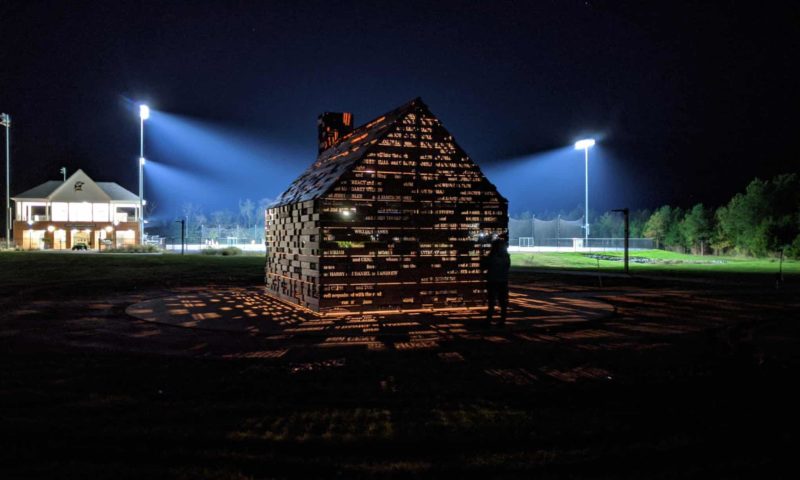When Tuajuanda Jordan first saw the newest addition to her college campus – a haunting memorial to enslaved people who lived, labored and died there – she stood and wept…
With the dedication of the Commemorative to Enslaved Peoples of Southern Maryland, one small public liberal arts college will be making a big statement about confronting its physical association with slavery. It will also be throwing down the gauntlet to other educational institutions to grapple with their own uncomfortable legacies…
“There are lots of people around here that have the Confederate flag and are very proud of that,” said Jordan, 60, who is African American. “St Mary’s county is a red dot in a blue state and our college is the blue dot within the red dot within the blue state. When things come up, there is tension sometimes between the folks in the area and our students.”
It was the summer of 2016 when the college began archaeological digging required before building a new sports stadium and uncovered artifacts associated with enslaved people’s quarters. Jordan immediately understood the significance. She asked focus groups of students, faculty, staff and community members to decide how best to honour the the enslaved people who lived in St Mary’s City between 1750 and 1815.
Last year the design firm RE:site was selected to build a memorial that would recast history from the perspective of those enslaved, instead of the land owners. The sculpture recreates an enslaved people’s cabin and incorporates “erasure poetry” culled from advertisements and other historical documents. At night, the lighting inside the memorial beams the poetry on to the surrounding landscape…
The college’s 361-acre waterfront campus is adjacent to St Mary’s City which, dating back to 1634, is the fourth oldest permanent English settlement in North America. St Mary’s county contains the historic Sotterley Plantation and the fiercely divisive Confederate Memorial Park.










Comments Are Welcome
Note: We moderate submissions in order to create a space for meaningful dialogue, a space where museum visitors – adults and youth –– can exchange informed, thoughtful, and relevant comments that add value to our exhibits.
Racial slurs, personal attacks, obscenity, profanity, and SHOUTING do not meet the above standard. Such comments are posted in the exhibit Hateful Speech. Commercial promotions, impersonations, and incoherent comments likewise fail to meet our goals, so will not be posted. Submissions longer than 120 words will be shortened.
See our full Comments Policy here.